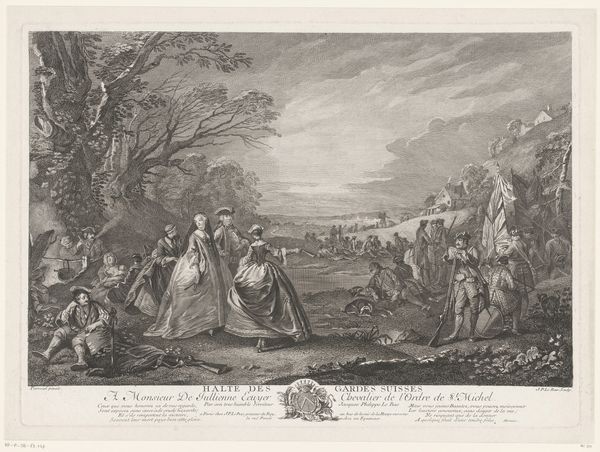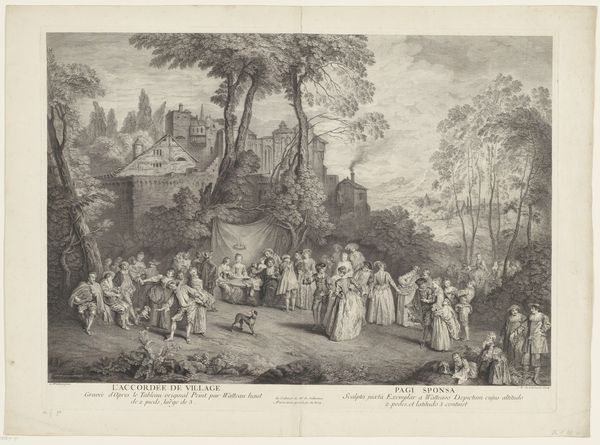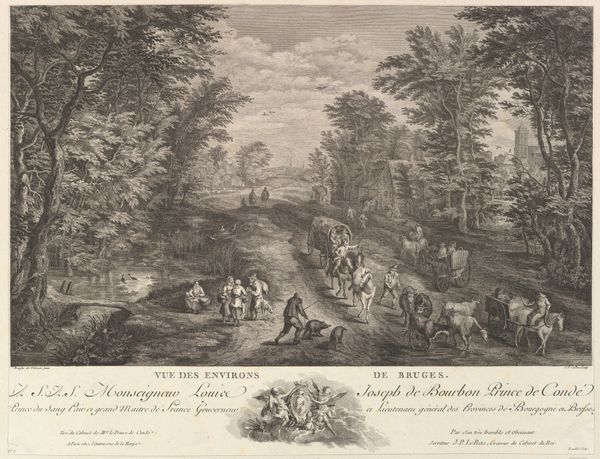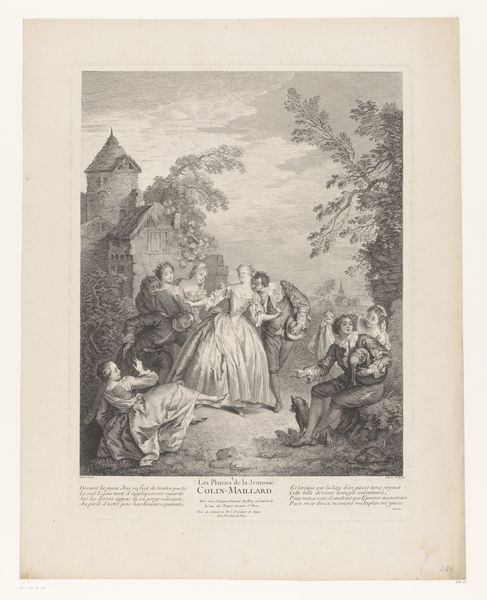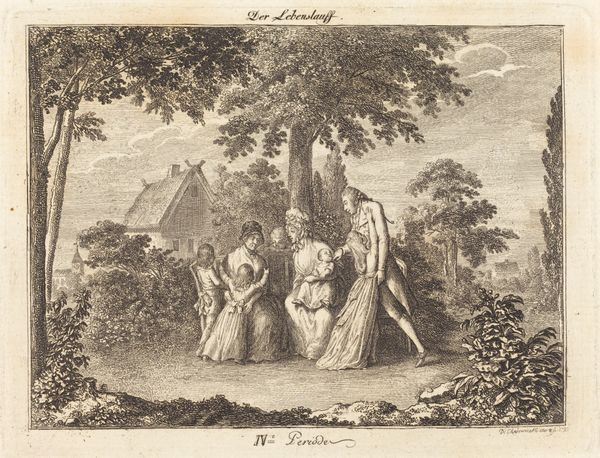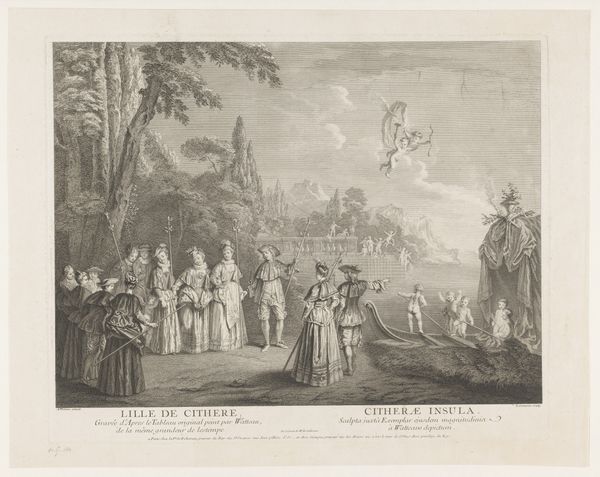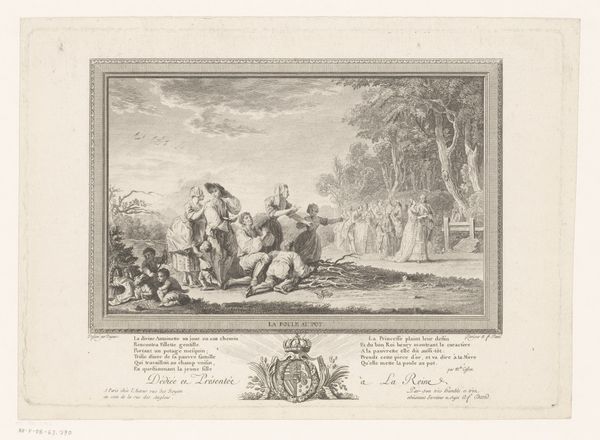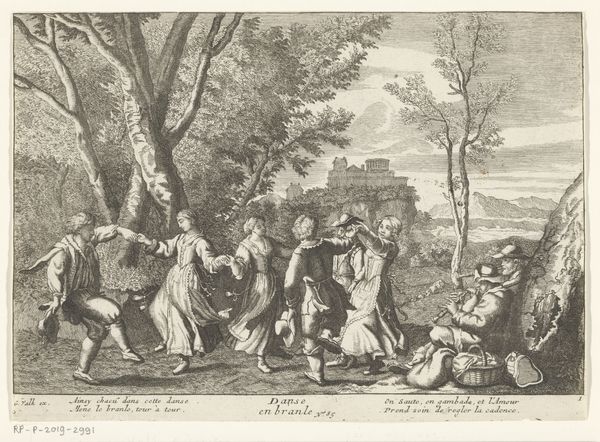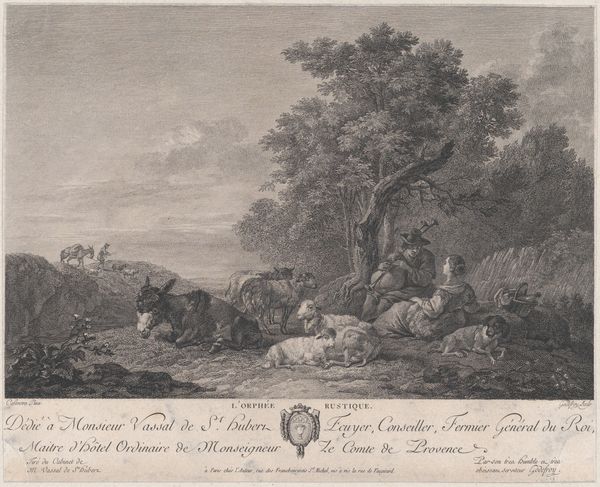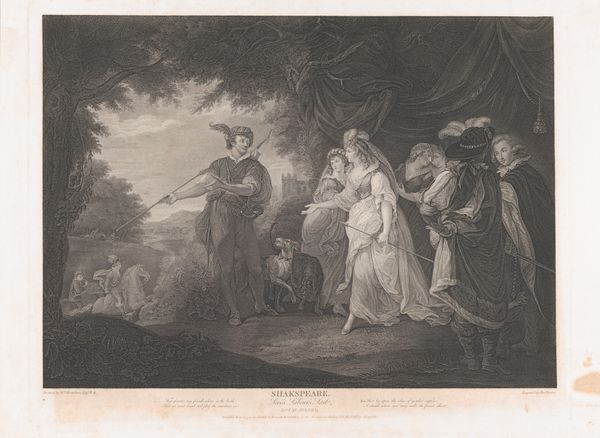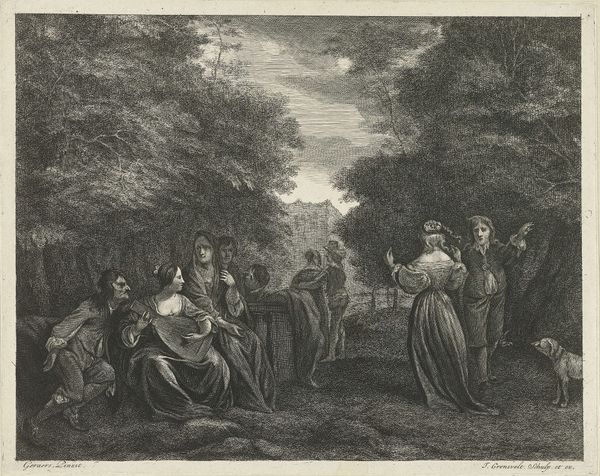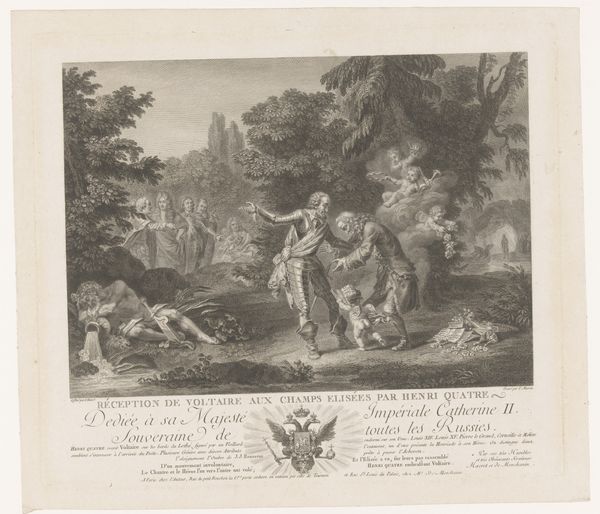
drawing, print, engraving
#
tree
#
drawing
# print
#
landscape
#
figuration
#
group-portraits
#
men
#
genre-painting
#
history-painting
#
engraving
#
rococo
Dimensions: sheet: 14 9/16 x 18 1/8 in. (37 x 46 cm) image: 12 3/16 x 14 3/16 in. (31 x 36 cm)
Copyright: Public Domain
Curator: Here we have Gabriel de Saint-Aubin’s "Le Carnaval du Parnasse," an engraving and etching from around 1761-1762. Editor: The setting immediately strikes me—a theatrical gathering staged in what appears to be a classical grove. There’s something whimsical and yet meticulously posed about it. Curator: The theatrical elements are key. Saint-Aubin documented the spectacles of Parisian life, the intersections of leisure, performance, and display. It reflects the material conditions and social rituals of the aristocracy at play. Look at the rendering of the costumes and the labor involved in producing the materials! Editor: Absolutely, the textiles alone are a cultural statement. And I’m drawn to the mythological symbolism inherent in placing this scene on Parnassus, the mountain sacred to Apollo and the Muses. What's being said about the role of performance and artistry in society? Curator: The means of representing the leisure of the upper class serves to reinforce their perceived value in a rapidly shifting socioeconomic landscape. The very act of creating and consuming images like this was part of that performance, influencing public opinion and solidifying class identity. Editor: Indeed. The iconography is rich. A 'carnival of Parnassus' suggests a world where art, culture, and spectacle intersect—a temporary space of freedom, maybe? Or is it more about upholding a traditional social hierarchy through aesthetic display? Curator: Considering the historical context, the labor involved in creating even a print such as this reflects a network of skilled artisans and industry. Editor: Right. In that sense, Saint-Aubin presents both a scene of opulent festivity and, perhaps unintentionally, hints at the immense social machinery required to sustain it. Fascinating tension there, I think. Curator: It all returns to a network of skilled artisans and their labor practices to be acknowledged when examining works like this. Editor: I agree. Looking closely, the dance and drama here serve to illustrate not only a visual tableau, but something that carries far greater psychological resonance than one would suspect.
Comments
No comments
Be the first to comment and join the conversation on the ultimate creative platform.
